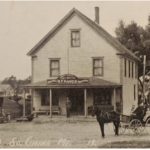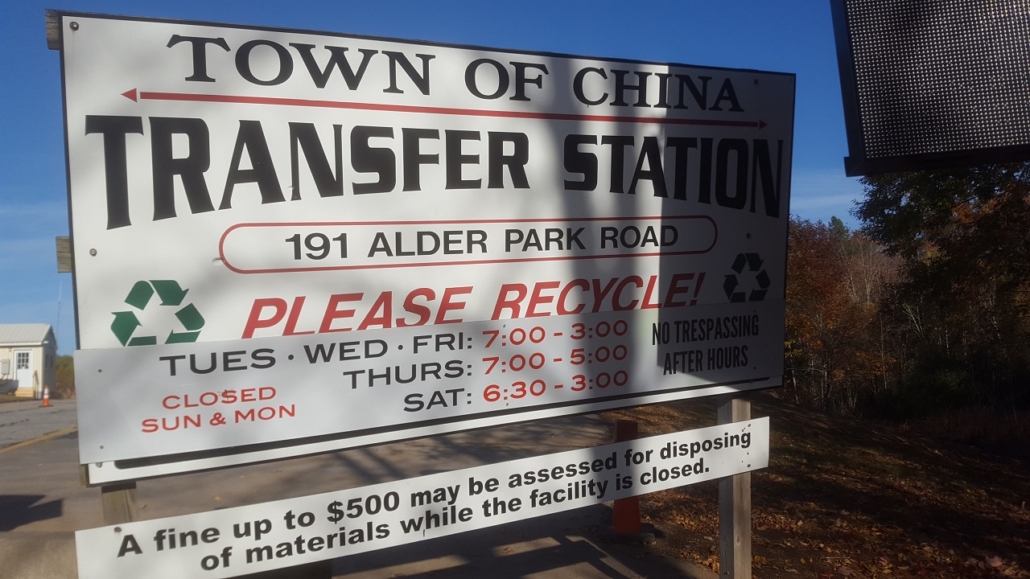China planners spend time on final Solar Energy System ordinance review
 by Mary Grow
by Mary Grow
China Planning Board members ignored most of their June 22 agenda to spend time on a final review of the Solar Energy Systems Ordinance they hope selectmen will present to voters on Nov. 2 and voters will approve.
Running out of time to finish, they scheduled a special meeting Monday evening, June 28. At that meeting, they agreed, non-unanimously, on a version to forward to the selectboard.
An early (May 2021) draft of the ordinance is on the town website, www.china.govoffice.com, under the Planning Board. Board members intend to publicize their final draft after they submit it to the selectboard.
Most of the June 22 and June 28 work was grammatical; major substantive issues have been resolved. The exception, discussed June 28 and at several prior meetings, was how to treat solar panels when determining lot coverage by impervious surfaces.
The panels have two parts, the relatively small bases on which the supporting poles stand and the much larger panels themselves. Since the panels are tilted, they cover slightly less ground than their actual size.
To help control erosion, state and town regulations limit the amount of ground area on a lot that can be covered by structures with impervious surfaces. If an ordinance treats a solar panel as a structure, the area covered by panels is limited – in the Town of China, to 20 percent of the lot in rural areas and 15 percent in shoreland zones (the two areas where the draft ordinance would allow rows of solar panels).
The state Department of Environmental Protection and many Maine towns do not call solar panels structures. A solar array that covers a lot almost completely, like the one on Route 3 outside Augusta that was repeatedly referenced by planning board members, is allowed.
China Planning Board members have called a solar panel a structure. They have thereby limited the amount of ground covered by installations they have approved under existing ordinances. Solar developers have asked them to change their approach.
The draft ordinance slightly modifies previous practice by providing that the tilt of the panels be considered in determining the area covered.
Board member Scott Rollins proposed a further compromise: count only one-half of the area of the panels as structures or impervious. The change would let a developer cover up to 40 percent of a lot, board member James Wilkens quickly calculated.
Rollins made three main points:
— The ground under solar panels is covered with grass and other low plants that absorb water dripping from the panels, rather than letting it run off. A solar array thus does not cause erosion.
— Since China’s lot coverage limit is one of the lowest around (to help protect the town’s lakes, people have said at previous meetings), making solar panels follow structure regulations is an unnecessarily restrictive provision that discourages solar development in town.
— Solar is a form of renewable energy that should be encouraged.
Wilkens and board Chairman Randall Downer were primarily concerned about the appearance of a field of panels like the one on Route 3, having heard multiple negative comments.
Downer fears too little restriction on lot coverage would lead China voters to reject the ordinance. He wants it approved Nov. 2; his goal is “never [again] to have to make it up as we go along on solar applications” to match them to ordinances written for buildings.
Wilkens added that even with the restrictions, China has attracted solar projects.
Rollins’ motion to include the 50 percent rule in the draft ordinance was rejected on a vote of one in favor (Rollins) to three opposed (Downer, Wilkens and Natale Tripodi).
Downer proposed a different compromise: ask selectmen to put a second question to voters about how limited the size of solar arrays should be. Rollins did not object. He and Downer intend to work on the wording of such a question before the planning board’s July 12 meeting.
As the June 28 meeting ended, board members voted 3-0-1 to forward the ordinance to the selectboard, with Rollins abstaining.
The only other issue covered on the June 22 agenda was resident Brent Chesley’s request for a clarification of a section of the minutes from the Feb. 23 planning board meeting. Codes Officer Jaime Hanson recommended adding Chesley’s suggested explanation, and board members approved unanimously.
Responsible journalism is hard work!
It is also expensive!
If you enjoy reading The Town Line and the good news we bring you each week, would you consider a donation to help us continue the work we’re doing?
The Town Line is a 501(c)(3) nonprofit private foundation, and all donations are tax deductible under the Internal Revenue Service code.
To help, please visit our online donation page or mail a check payable to The Town Line, PO Box 89, South China, ME 04358. Your contribution is appreciated!





Leave a Reply
Want to join the discussion?Feel free to contribute!